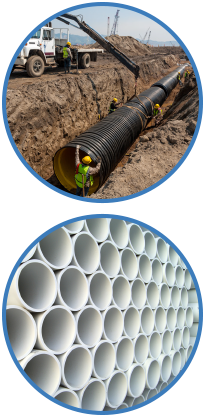 UPDATE: The IGS North America has postponed Dr. Pluimer’s webinar to the Fall, due to chapter member and interested attendee requests. (It’s a busy work season!)
UPDATE: The IGS North America has postponed Dr. Pluimer’s webinar to the Fall, due to chapter member and interested attendee requests. (It’s a busy work season!)
We will keep you all posted here on the IGS-NA website for webinar updates and when the event will be rescheduled. We apologize for any inconveniences this may have caused.
Thank you again for supporting IGS-NA (NAGS) and the IGS.
For any questions about the webinar, please contact:
info@igs-na.org
(561) 768 9487
—————-
IGS North America Presents:
Introduction To Geopipe
Presented by Dr. Michael Pluimer, University of Minnesota – Duluth
Date: THIS WEBINAR IS BEING RESCHEDULED
Registration Cost:
$20.00* – IGS-NA Members | $20.00 – IGS-NA Student Members
$60.00 – IGS Members | $80.00 – Non-members
* IGS-NA Members receive one FREE webinar coupon on paying annual dues
EARN 1 PDH
Presenter: Dr. Michael Pluimer, University of Minnesota – Duluth
Introduction To Geopipe
In this webinar, Dr. Pluimer will open a series on applications, specifications, and test methods associated with geopipe. These polymeric pipe materials, commonly offered in corrugated and smooth varieties and a wide range of diameters and thicknesses, are essential to the success of modern infrastructures: water, wastewater, sewer, landfills, mining, residential and commercial development, utilities, etc. The session will detail types of geopipe (e.g., dual-wall pipe, polyethylene corrugated pipe, numerous other materials), raw material properties and resulting pipe properties, long-term durability, common specification requirements, and more. Essential engineering parameters such as stress cracking, oxidation resistance, UV degradation, and creep will be discussed.
Key Topics Include:
IGS North America’s Introduction To Geopipe Webinar is ideal for environmental engineers, infrastructure-owning agencies, design engineers, municipal engineers, regulators, general contractors, and other stakeholders.
Please send questions to info@IGS-NA.org or call +1 561 768 9487.
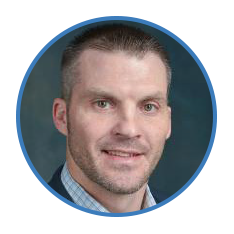 Presenter Bio: Michael Pluimer holds a PhD in Civil Engineering (2016) from Villanova University and a Master’s Degree in Mechanical Engineering (2002) from the University of Minnesota. His PhD research was on the performance of corrugated HDPE pipe manufactured with post-consumer recycled content in commuter railroad applications. Dr. Pluimer developed and validated a service life model for pipes in these applications relative to both the fatigue- and creep-related slow crack growth failure mechanisms. The service life model utilized ASTM F3181, the Un-notched Constant Ligament Stress (UCLS) test, a new test method developed for corrugated HDPE pipe materials containing recycled content.
Presenter Bio: Michael Pluimer holds a PhD in Civil Engineering (2016) from Villanova University and a Master’s Degree in Mechanical Engineering (2002) from the University of Minnesota. His PhD research was on the performance of corrugated HDPE pipe manufactured with post-consumer recycled content in commuter railroad applications. Dr. Pluimer developed and validated a service life model for pipes in these applications relative to both the fatigue- and creep-related slow crack growth failure mechanisms. The service life model utilized ASTM F3181, the Un-notched Constant Ligament Stress (UCLS) test, a new test method developed for corrugated HDPE pipe materials containing recycled content.
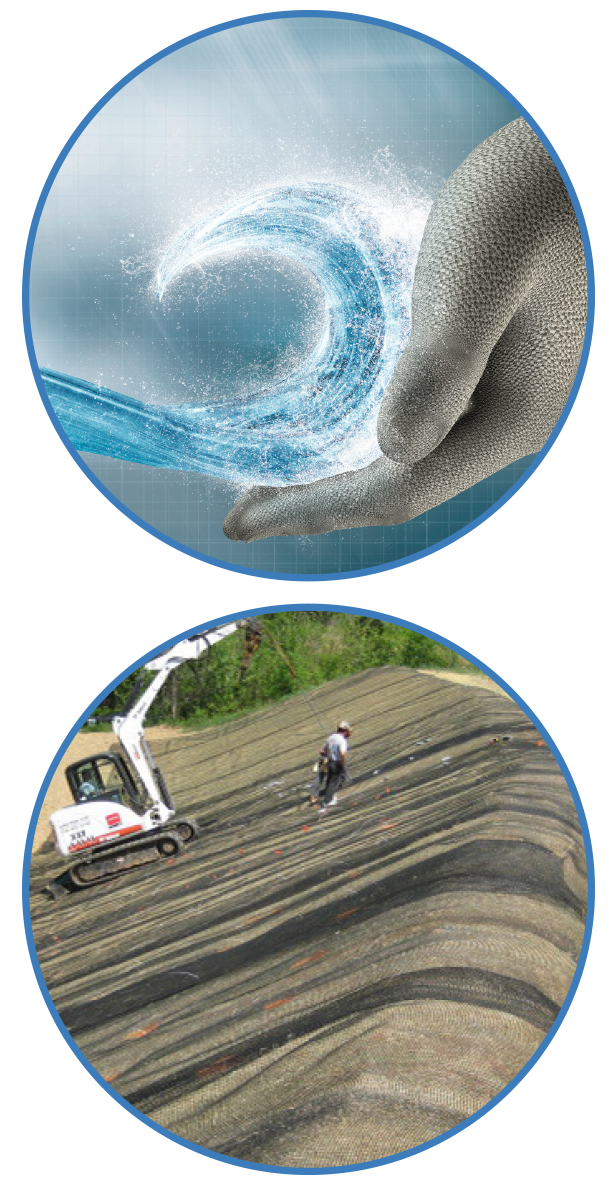 IGS North America Presents:
IGS North America Presents:
Erosion Control with Geosynthetics
Presented by Markus Wilke, HUESKER
Date: Tuesday, May 29, 2018 @ 1:00 – 2:30pm EDT (includes Q&A time)
Registration Cost:
$20.00* – IGS-NA Members | $80.00 – Non-members
* IGS-NA Members receive one FREE webinar coupon on paying annual dues
EARN 1 PDH
Presenter: Markus Wilke, HUESKER
REGISTER TODAYErosion Control with Geosynthetics
Erosion is a natural process, resulting from the interaction between water and soil. Unfortunately, this can cause severe damage to infrastructure and endanger people’s lives. Culverts, roads, bridge foundations, embankments, landfill slopes, MSE walls, and other critical pieces of infrastructure are susceptible. With greater urbanization occurring around the world and population centers swelling along coastlines and rivers, the collective need to better manage erosion threats has intensified.
Geosynthetics provide highly engineered solutions for solving all of these erosion problems.
DOWNLOAD EVENT PDFKey Topics Include:
IGS North America’s Erosion Control Webinar Series is ideal for environmental engineers, infrastructure-owning agencies, design engineers, municipal engineers, regulators, general contractors, and other stakeholders.
Interested participants can apply online. Please send questions to info@IGS-NA.org or call +1 561 768 9487.
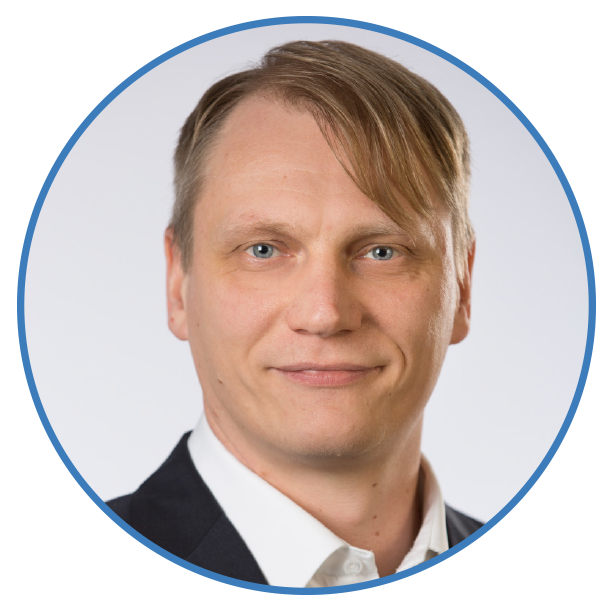 Presenter Bio: Markus Wilke is an engineer and business development manager with HUESKER, one of the world’s oldest and largest geosynthetic manufacturing and design engineering companies. Wilke brings more than a decade of experience to the presentation, including a very deep background in hydraulic engineering and coastal protection and remediation. He has published extensively on topics such as dewatering, port maintenance, bank stabilization, and waterway engineering.
Presenter Bio: Markus Wilke is an engineer and business development manager with HUESKER, one of the world’s oldest and largest geosynthetic manufacturing and design engineering companies. Wilke brings more than a decade of experience to the presentation, including a very deep background in hydraulic engineering and coastal protection and remediation. He has published extensively on topics such as dewatering, port maintenance, bank stabilization, and waterway engineering.
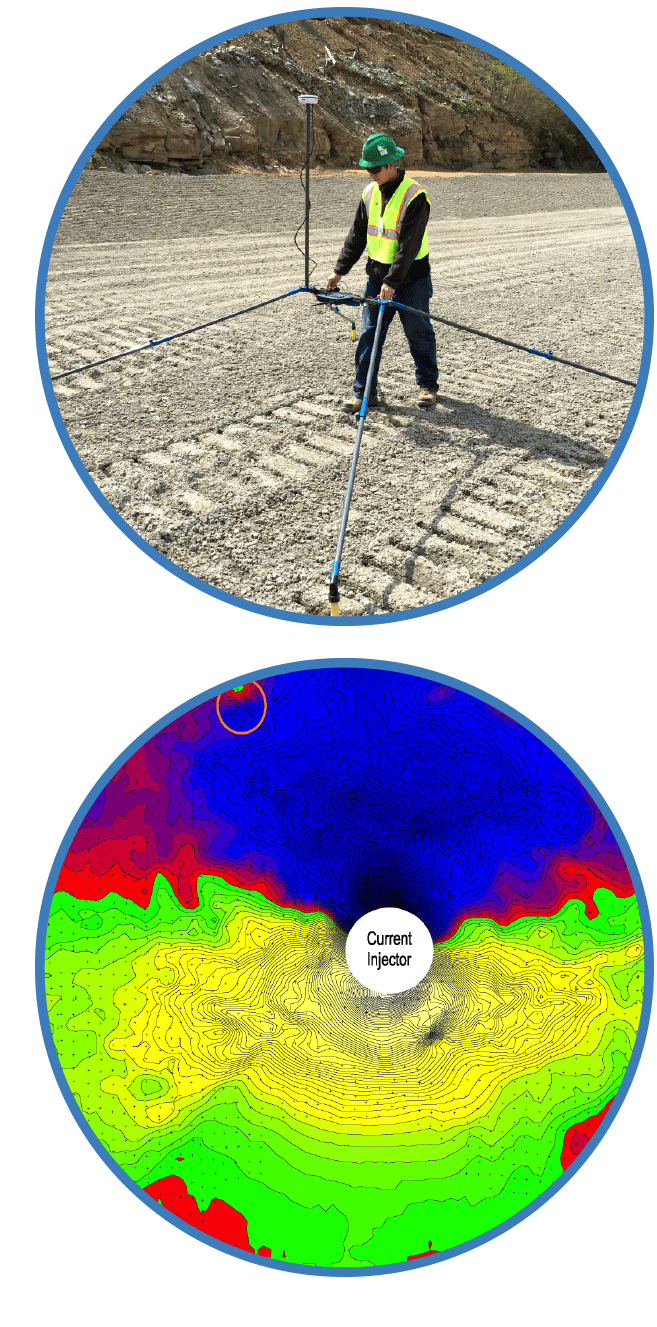 IGS North America Presents:
IGS North America Presents:
Electrical Leak Location Webinar Series
The Dipole Method (ASTM D7007): Advantages, Technique, and Necessary Site Conditions
Presented by Abigail Gilson, M.S., P.E.
Date: Tuesday, April 24, 2018 @ 1:00 – 2:30pm EDT (includes Q&A time)
Registration Cost:
$20.00* – IGS-NA Members | $80.00 – Non-members
* IGS-NA Members receive one FREE webinar coupon on paying annual dues
EARN 1 PDH
Presenter: Abigail Gilson, Director of TRI Environmental’s Liner Integrity Services
ABeck@TRI-ENV.com | +1 512 623 0511
The Dipole Method (ASTM D7007): Advantages, Technique, and Necessary Site Conditions
Among the various types of electrical leak location methodologies used to evaluate geosynthetic lining systems in the field, the dipole method has a unique distinction: it is the only ASTM standardized ELL practice that can locate damage to geomembranes caused during or after cover material placement. Dipole technology can locate very small damage points, such as pinholes or knife slices, under several feet of earthen material. It can even be applied to filled impoundments that are actively in service. As such, dipole surveys are a powerful tool for lined facility validation and protection; but, like any ELL methodology, it can be rendered ineffective if site boundary conditions are poor. In this webinar, Abigail Gilson-Beck, one of the leading experts on ELL, explains ASTM D7007 standardized procedures, including leak detection distance testing and the various methods of data analysis. The importance of good site boundary conditions is detailed with case studies. Earn 1 PDH at the conclusion of the first webinar.
DOWNLOAD EVENT PDFAttendees will learn about:
The Electrical Leak Location Series is ideal for design engineers, CQA firms, site owners, and regulators interested in specifying and employing this service.
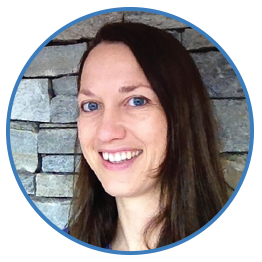 Presenter Bio: Abigail Gilson, M.S., P.E., is the Director of TRI Environmental’s Liner Integrity Services. She has a wealth of experience in geomembrane-lined containment facility design and construction and has performed electrical leak location surveys since 2004. As a graduate of TRI’s inaugural liner integrity class in 2003, her electrical leak location field experience has exceeded 100 projects and 110 million square feet. She has written and presented papers to industry conferences and taught short courses worldwide regarding the technical aspects of liner integrity and leak location surveys.
Presenter Bio: Abigail Gilson, M.S., P.E., is the Director of TRI Environmental’s Liner Integrity Services. She has a wealth of experience in geomembrane-lined containment facility design and construction and has performed electrical leak location surveys since 2004. As a graduate of TRI’s inaugural liner integrity class in 2003, her electrical leak location field experience has exceeded 100 projects and 110 million square feet. She has written and presented papers to industry conferences and taught short courses worldwide regarding the technical aspects of liner integrity and leak location surveys.
Ms. Gilson’s expertise is available for providing equipment, field training, classroom education, instructional presentations, engineering consulting, and liner integrity survey execution. She has trained staff in all of TRI’s office locations to provide local assistance on survey projects.
 IGS North America Presents
IGS North America Presents
WEBINAR: Pond Liner System Design and Operation
Presented by Richard Thiel, P.E., President, Thiel Engineering
Tuesday, January 30, 2018 | 1:00 – 2:30 pm EST (includes Q&A time)
Registration Cost:
$20.00* – IGS-NA Members | $80.00 – Non-members
Earn 1 PDH
* IGS-NA Members receive one FREE webinar coupon on paying annual dues
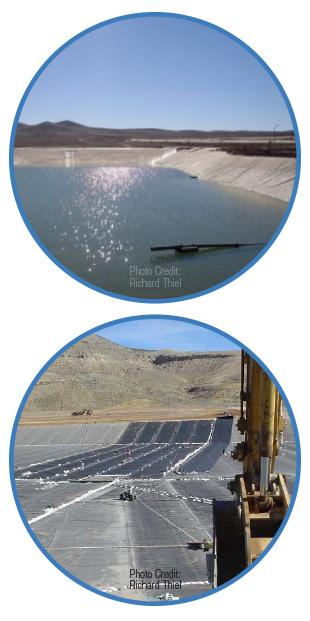 Though pond lining applications are common, the proper design and operation of pond lining systems requires great care. A large number of facilities in need of liquid containment are sensitive sites at which pond leakage could result in geotechnical failure of the embankments and subgrade, environmental damage, loss of valuable operational solutions or water, and disruption of operations. In this webinar, Richard Thiel, P.E., will share decades of insight into the proper design and operation of geosynthetic pond lining systems.
Though pond lining applications are common, the proper design and operation of pond lining systems requires great care. A large number of facilities in need of liquid containment are sensitive sites at which pond leakage could result in geotechnical failure of the embankments and subgrade, environmental damage, loss of valuable operational solutions or water, and disruption of operations. In this webinar, Richard Thiel, P.E., will share decades of insight into the proper design and operation of geosynthetic pond lining systems.
The engineering information in the session provides guidance and key considerations for those who work with potable water reservoirs, stormwater detention ponds, mining spoil containment sites, irrigation water storage, wastewater lagoons, food and industrial processing facility wastewater treatment ponds, hydrofracking containment ponds, pumped storage reservoirs, and more.
Attendees will learn about:
Participants will earn 1 PDH at the conclusion of this webinar.
Who Should Attend: Owners and operators of liquid containment facilities; contractors involved in lined pond construction and maintenance; and civil engineers, hydraulic engineers, water engineers, stormwater engineers, wastewater engineers, agricultural engineers, gas and oil extraction engineers; and mining engineers that design containment facilities.
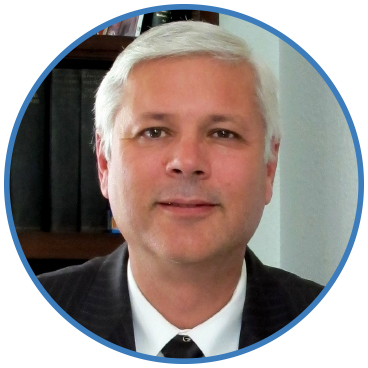 Presenter Bio: Richard Thiel, P.E., has more than 30 years of experience and specialization in containment design applications for geotechnical projects, waste containment, secondary containment of fuel, and leach mining applications. His work has involved extensive interaction with feasibility evaluations, design, permitting, design peer review, economic evaluations, failure analyses, and construction of waste facilities and surface impoundments. He is an expert in the design of liner systems with soils and geosynthetics, leachate management systems including pipelines and pump stations, geotechnical site reconnaissance and resource investigation programs, construction quality assurance (CQA), and assistance in developing state solid waste regulations.
Presenter Bio: Richard Thiel, P.E., has more than 30 years of experience and specialization in containment design applications for geotechnical projects, waste containment, secondary containment of fuel, and leach mining applications. His work has involved extensive interaction with feasibility evaluations, design, permitting, design peer review, economic evaluations, failure analyses, and construction of waste facilities and surface impoundments. He is an expert in the design of liner systems with soils and geosynthetics, leachate management systems including pipelines and pump stations, geotechnical site reconnaissance and resource investigation programs, construction quality assurance (CQA), and assistance in developing state solid waste regulations.
Please send all questions to info@IGS-NA.org or call +1 561 463 5868.
 IGS North America Presents
IGS North America Presents
WEBINAR: Understanding the Role of Minimum Average Roll Values (MARV) in Geosynthetic Specifications
Presented by Beth Wilbanks
Tuesday, December 19, 2017 | 1:00 – 2:00pm EST
Registration Cost: $20.00
FREE for IGS-NA Members!
Earn 1 PDH
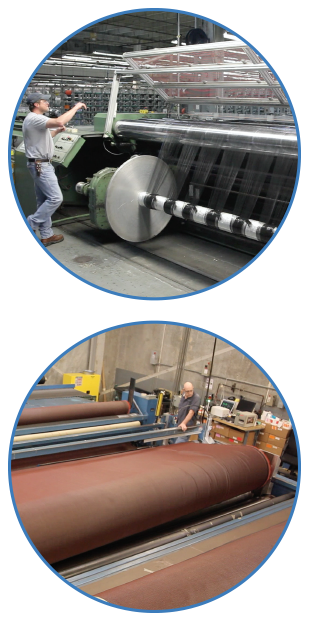 Understanding minimum average roll value (MARV) is essential in ensuring data support product requirements reported by the manufacturer. There appears to be confusion in the geosynthetic industry concerning the application and definition of product requirements particularly as they relate to MARV. MARV is a statistical value and not a ‘minimum’ number. The interpretation of these values has become an issue and actual data may not support a calculated MARV that meets or exceeds the published MARV.
Understanding minimum average roll value (MARV) is essential in ensuring data support product requirements reported by the manufacturer. There appears to be confusion in the geosynthetic industry concerning the application and definition of product requirements particularly as they relate to MARV. MARV is a statistical value and not a ‘minimum’ number. The interpretation of these values has become an issue and actual data may not support a calculated MARV that meets or exceeds the published MARV.
Attendees will learn about:
Participants will earn 1 PDH at the conclusion of this webinar.
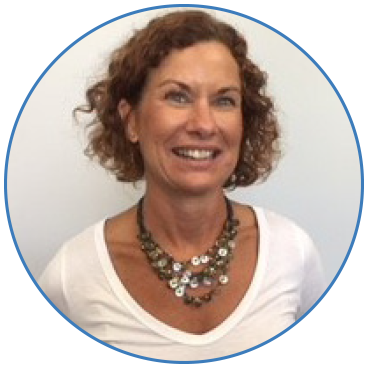 Presenter Bio: Beth Wilbanks has been with TenCate Geosynthetics for approximately 20 years. During most of that time she led the Quality department and was instrumental in achieving ISO 17025 laboratory and ISO 9001 quality management accreditation. Her current role at TenCate Geosynthetics is Director of Product Management. She is actively involved in ASTM Committee D35 on Geosynthetics and was recently recognized for her efforts in the development of D8102 Practice for Manufacturing Quality Control of Geotextiles. She continues to work in the quality area and has coauthored and presented a paper on the MARV topic and its impact on the geosynthetics industry.
Presenter Bio: Beth Wilbanks has been with TenCate Geosynthetics for approximately 20 years. During most of that time she led the Quality department and was instrumental in achieving ISO 17025 laboratory and ISO 9001 quality management accreditation. Her current role at TenCate Geosynthetics is Director of Product Management. She is actively involved in ASTM Committee D35 on Geosynthetics and was recently recognized for her efforts in the development of D8102 Practice for Manufacturing Quality Control of Geotextiles. She continues to work in the quality area and has coauthored and presented a paper on the MARV topic and its impact on the geosynthetics industry.
Please send all questions to info@IGS-NA.org or call +1 561 463 5868.
 IGS North America Presents:
IGS North America Presents:
Electrical Leak Location Webinar Series
Episode 1: Overview of Electrical Leak Location (ELL) Methods and Their Application
Presented by Abigail Gilson, M.S., P.E.
Date: Tuesday, November 21, 2017 @ 1:00 – 2:00pm EST
Registration Cost: FREE
EARN 1 PDH
Presenter: Abigail Gilson, Director of TRI Environmental’s Liner Integrity Services | ABeck@TRI-ENV.com | +1 512 623 0511
Overview of Electrical Leak Location (ELL) Methods and Their Application
All geomembrane-lined containment facilities should be tested for leaks before going into service. Early detection of leaks allows for swift and effective repair pre-service, protecting the engineer, contractor, owner and in many cases the environment. There are a variety of different methods available for electrical leak location. Choosing and specifying the most appropriate method requires an understanding of the technologies available: their benefits and limitations. In many applications an ELL method must be specified in the design phase, before construction starts, to ensure a successful test.
This presentation identifies the various common ELL technologies and identifies criteria which should be considered when specifying electrical leak location (ELL) methodology. Earn 1 PDH at the conclusion of the first webinar.
DOWNLOAD EVENT PDFAttendees will learn about:
 Presenter Bio: Abigail Gilson, M.S., P.E., is the Director of TRI Environmental’s Liner Integrity Services. She has a wealth of experience in geomembrane-lined containment facility design and construction and has performed electrical leak location surveys since 2004. As a graduate of TRI’s inaugural liner integrity class in 2003, her electrical leak location field experience has exceeded 100 projects and 110 million square feet. She has written and presented papers to industry conferences and taught short courses worldwide regarding the technical aspects of liner integrity and leak location surveys.
Presenter Bio: Abigail Gilson, M.S., P.E., is the Director of TRI Environmental’s Liner Integrity Services. She has a wealth of experience in geomembrane-lined containment facility design and construction and has performed electrical leak location surveys since 2004. As a graduate of TRI’s inaugural liner integrity class in 2003, her electrical leak location field experience has exceeded 100 projects and 110 million square feet. She has written and presented papers to industry conferences and taught short courses worldwide regarding the technical aspects of liner integrity and leak location surveys.
Ms. Gilson’s expertise is available for providing equipment, field training, classroom education, instructional presentations, engineering consulting, and liner integrity survey execution. She has trained staff in all of TRI’s office locations to provide local assistance on survey projects.
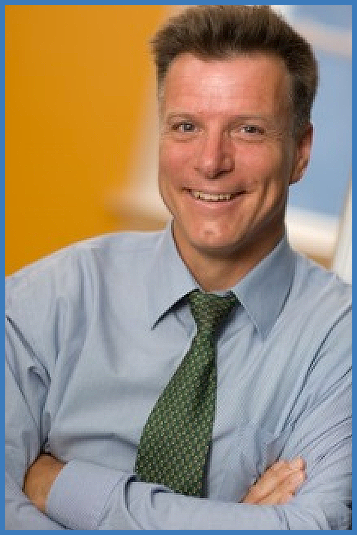 Event: NAGS 2014 Webinar Series: Presentation #3
Event: NAGS 2014 Webinar Series: Presentation #3
Date: Wednesday, October 8, 2014, 1-2 pm EDT
Location: Online Webinar
REGISTRATION NOW OPEN (Registration Closes October 7th, 2014)
NAGS is very pleased to announce the 2014 Webinar Series:Presentation #3:
“Geofilters”
Presented by:
R. Jonathan Fannin, Ph.D., P. Eng.
University of British Columbia
Vancouver, Canada;
DATE: Wednesday October 8, 2014, 1:00 – 2:00 pm EST
ABSTRACT: The origins of current design practice for a granular filter are first examined, along with some of the lessons learned over the years from construction of very large embankment dams, including the WAC Bennett dam in British Columbia. The origins of current design practice for a geotextile filter are then examined, in conjunction with some of the lessons learned from their use in earthworks, including the rehabilitation of the Alouette dam spillway in British Columbia. The evidence to-date suggests that both sand-gravel filters and geosynthetic filters have generally performed well at controlling seepage flow in earthwork applications for many years. However there have also been problems reported, both for granular filters and for geotextile filters. This lecture draws upon industry-university research on the sinkhole incident at the WAC Bennett dam in British Columbia, and industry-university research on the filter compatibility of geotextiles in unidirectional and reversing flow, to understand better the significance of issues affecting the performance of geofilters in earthworks. The merits of mandating the use of a geosynthetic filter as an adjunct to a granular filter, in critical infrastructure, are then considered within the context of risk management.
ABOUT THE SPEAKER: Jonathan Fannin obtained a B.Sc. (Civil Engineering) from the Queen’s University of Belfast, and a D. Phil. (Geotechnical Engineering) from the University of Oxford for studies on geosynthetics for soil stabilization. He is a recipient of several awards, including an IGS Award for contributions of laboratory and field research to engineering practice, a CGS Quigley Award for the best paper in the Canadian Geotechnical Journal, a Karl Terzaghi Fellowship from the Norwegian Geotechnical Institute and most recently, a Distinguished Visiting Fellow award from the U.K. Royal Academy of Engineering. Jonathan has provided specialist technical advice on a number of dam projects in North and South America and, in 2013, was made a Fellow of the Engineering Institute of Canada in 2013.
PRESENTATION #3 REGISTRATION FEE:
$100 – Presentation #3 MEMBER Fee: NAGS / CGS / IGS
$300 – Presentation #3 NON-MEMBER Fee ( Save money and become a member of NAGS today! )
$25 – Presentation #3 NAGS Student Member Rate ( Students may apply to NAGS at no charge for membership! )
PDHs: Professional development credit will be available for each participant paying a registration fee.
GROUPS: Small groups of up to five people are welcome to participate for one registration fee. Groups larger than five must pay a second registration fee.
REGISTRATION NOW OPEN (Registration Closes October 7th, 2014)
REGISTER HERENOTES: All fees are in USD. Why not join NAGS for $75 USD? Please see www.nags-igs.org for details.
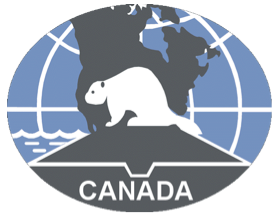
Co-sponsored by the Geosynthetics Division of the Canadian Geotechnical Society (CGS)
NAGS – Providing leadership in advancing the education and research of geosynthetics
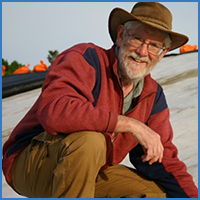 Event: NAGS 2014 Webinar Series: Presentation #1
Event: NAGS 2014 Webinar Series: Presentation #1
Date: Wednesday March 19, 2014, 1 – 2 pm EDT
Location: Online Webinar
NAGS is very pleased to announce the 2014 Webinar Series:Presentation #1:
“Recent insights on the performance of GCLs in bottom liners and covers”
Presented by:
R. Kerry Rowe
GeoEngineering Centre at Queen’s-RMC
Queen’s University, Kingston, Canada
DATE: Wednesday March 19, 2014, 1-2 pm EST
ABSTRACT: The available evidence suggests that both geosynthetic clay liners (GCLs) and composite liners with a geomembrane (GMB) over a clay liner have performed extremely well at controlling leakage in field applications for a couple of decades. However there have also been some problems reported and recent research has allowed us to have a much better understanding of the key design and construction factors affecting good and poor performance. This lecture examines some of these issues affecting GCL performance such as the water retention curve of GCLs, subgrade grain size and initial water content, GCL water content and normal stress on the GCL, the effect of daily thermal cycles on hydration, GCL panel shrinkage, and cation exchange. Factors affecting composite liner performance examined include the potential for desiccation of the clay liner under a sustained thermal gradient, GMB/GCL interface transmissivity, wrinkles in the GMB when the ballast layer is placed over the composite liner, and the potential interaction between wrinkles and GCL panel overlaps. Recent insights regarding leakage through composite liners are discussed. Although a number of potential issues with liner performance are discussed, it is concluded that all can be addressed by appropriate design, material selection, construction, and operation.
ABOUT THE SPEAKER: Professor Rowe holds the Canada Research Chair in Geotechnical and Geoenvironmental Engineering at Queen’s University. He is an author of 300 journal papers, 3 books, 18 book chapters, and 290 full conference papers. He has presented many prestigious lectures including the Giroud Lecture (2002), Rankine Lecture (2005), and Casagrande Lecture (2011). He is a fellow of the Royal Society of Canada, the Canadian Academy of Engineering, the Royal Academy of Engineering and The Royal Society. He is past president of the International Geosynthetics Society, Canadian Geotechnical Society, and Engineering Institute of Canada.
PRESENTATION #1 REGISTRATION FEE:
$100 – Presentation #1 MEMBER Fee: NAGS / CGS / IGS
$300 – Presentation #1 NON-MEMBER Fee ( Save money and become a member of NAGS today! )
$25 – Presentation #1 NAGS Student Member Rate ( Students may apply to NAGS at no charge for membership! )
PDHs: Professional development credit will be available for each participant paying a registration fee.
GROUPS: Small groups of up to five people are welcome to participate for one registration fee.
Groups larger than five would be required to pay a second registration fee.
NOTES: All fees are in USD. Why not join NAGS for $75 USD? Please see www.nags-igs.org for details.

Co-sponsored by the Geosynthetics Division of the Canadian Geotechnical Society (CGS)
NAGS – Providing leadership in advancing the education and research of geosynthetics